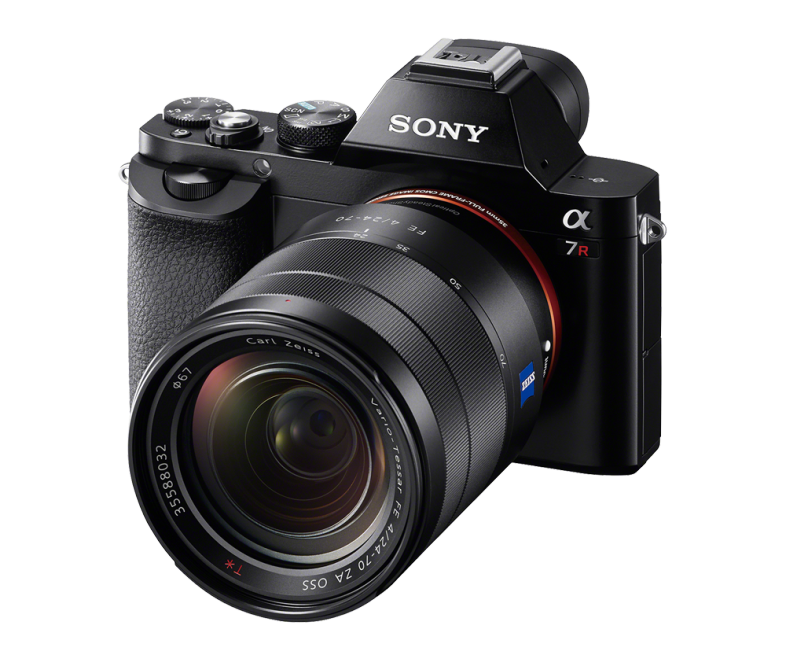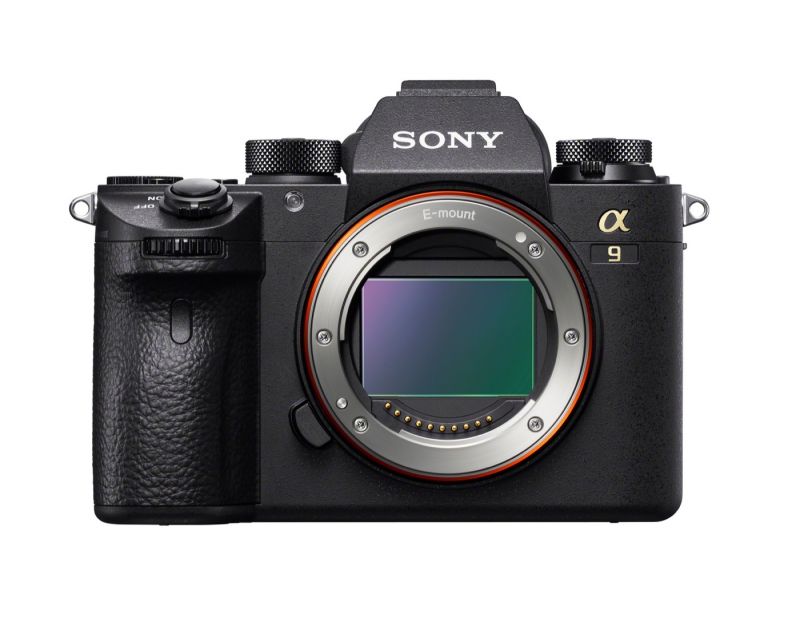
I’ve been hearing photographers complain about how “61 megapixels is too many!” So, please take a minute to read this: I’m going to remind you what is really happening here, why it’s such a big deal, and who should be paying the most attention.
(Are YOU one of the culprits complaining about the number 61? I don’t blame you, it’s a shocking number!)
The Real Reason The Sony A7R IV Is Kind Of A Big Deal

Okay, so, the title of this article was not intended to be clickbait. Simply put, 61 megapixels really is a distraction from the most impressive thing that Sony is doing right now. Here’s what they’re doing that is more important: they’re checking off all the boxes on the list of things that used to make mirrorless cameras so terrible, and they doing it in a very smart way.
Yes, Sony was the first to release a full-frame mirrorless system, back in 2013. However, that’s not even on my forthcoming list of the steps Sony took in order to get where they are today. If anything, that would be step number zero, because, (please read this next part, before you comment “you’re just a Sony fanboy!) …let’s be honest: those first-generation cameras were terrible. Only a select few types of serious photographers could rely on them; the rest of us didn’t even look twice, and just stuck with our trusty DSLRs. For the record, I didn’t start using mirrorless cameras for serious professional work until about a year ago.
Anyways, it’s what happened after the A7, A7R, and A7S came out that contained the important lessons which we should pay attention to. Here’s the first lesson/point…
1.) Sony listened to photographers’ complaints about the early generations of mirrorless digital cameras

Every camera company does listen to feedback from photographers, in fact, Canon and Nikon have been doing it for decades. We’ve all heard the reports of “secret” new cameras being spotted out in the field, used by some veteran pro who is likely to give very good feedback on how to fine-tune that camera.
What Sony did, and is still doing, however, is crank up that flow of feedback. They listen to feedback from all types of photographers, not just the older, experienced veterans. They’re getting tons of feedback from “content creators”, of all ages, and of all types, from die-hard landscape photographers to high-end fashion photographers. (And yes, “influencers” too, probably.)
Yes, Nikon and Canon certainly get feedback from all types of photographers, too, including different age/gender categories, and different types of photography. However, it seems that the pulse of the photography community itself has noticed something and agreed: Sony seems to be doing the most listening. But, of course, listening is only half of it. You gotta listen, and then take action…
2.) The engineers prioritized which problems needed to be solved first, and which ones could wait until later

Indeed, listening alone is downright worthless if nobody takes action on that feedback. With that in mind, it is very interesting to consider what Sony did next: they prioritized working on solving the biggest problems first.
Like I said, mirrorless cameras were pretty terrible 5+ years ago, for so many different reasons. Terrible battery life, laggy and low-res EVFs, and of course abysmal autofocus, were all at the top of most early adopter’s lists of complaints. And, so, Sony poured R&D into those biggest problems first. They took a lot of flak for making marginal improvements to their overall ergonomics and menu interface at first, but honestly, they were smart to stick to their priorities with their R&D time and money!
3.) The system got decently better with each generation
 Read our initial review of the Sony A7R II here (Once again, its claim to fame was largely its image quality)
Read our initial review of the Sony A7R II here (Once again, its claim to fame was largely its image quality)
So, the mk2 generation cameras saw decent (though still not enough, for some) improvements to autofocus and viewfinder lag/resolution.
Then, the mk3 generation cameras received a few other much-needed improvements, namely the vastly superior Z-class battery and dual SD card slots. For many, the battery life problem vanished completely with the ability to power a camera directly from a USB battery. Plus, of course, we got better EVFs and better autofocus.
Oh, and the A9 took AF and lag time etc. to an even higher level, by the way. It’s more than good enough for all but the most high-speed types of action sports. As a wedding photographer, the A9 is hands-down my favorite camera. (Even though, yeah, I still can’t stand the menus.)
At this point, though, what do we have? Just one camera from the mk4 generation. The 61-megapixel A7RIV. But, here’s the thing- it’s just one camera in a system that has previously had three different sensors in a nearly identical physical form factor.
Here’s why 61 megapixels isn’t the most exciting thing about the A7R IV
 Read our initial review of the Sony 35mm f/1.8 G here!
Read our initial review of the Sony 35mm f/1.8 G here!
With that in mind, it should be clear why 61 megapixels isn’t what everybody should be talking about right now. We all know that most photographers don’t NEED 61 megapixels. Indeed, most photographers are perfectly happy with the Sony A7 III, and 24 megapixels is more than enough for all kinds of photography.
So, here it is: imagine a Sony A7R IV, but with a 24-30 megapixel sensor. It will undoubtedly have incredible autofocus, with sticks-like-glue eye AF for both photo and video, plus Real-Time Tracking that is the best in the business. For $1999. Oh, and it will also probably have all of the awesome ergonomic improvements that the A7R IV has, too.
Then, imagine the next generation A7S-series camera, with ~6K video, and all those mk4 generation upgrades. Because again, we know that if Sony does make such a camera, it will share tons of physical and other features with other current-generation cameras.
4.) Each generation of cameras is almost identical in physical design

This is definitely where it all comes together. Because unlike Canon and Nikon DSLRs, which have usually had significant differences between their overall camera design when comparing entry-level and advanced camera bodies, (both crop and full-frame) …the Sony A7-series “family” has all had one commonality: Each generation of cameras has been nearly identical, physically speaking.
What this means is, if you can’t afford a $3500 camera, or if you just don’t want to have to deal with 61-megapixel raw files, all you have to do is wait for the $2000, 24-30 megapixel version to come out. Because, you know it will be nearly identical in almost all the ways that truly matter, and maybe even better in some.
Yes, there will be plenty of other subtle differences between the two cameras, but Sony seems to be doing one thing differently than the historic trends of other camera companies- instead of omitting one big, critical feature in order to differentiate between two classes of cameras, they include every major feature they can, and instead cut costs by omitting the less critical specs or functions, the ones that the majority of photographers won’t miss.
And that, right there, is what is setting Sony apart from its competition in the eyes of photographers. Not a megapixel race. Because megapixels don’ matter nearly as much as all the other features and performance of the cameras in the system, collectively.
What I Want To See In a Sony A7 IV And A7S III
Based on the historical progression of the A7-series camera line, a Sony “A7 IV” feels so predictable that I can guess exactly what it will, and won’t, include. I don’t have any insider info right now, but we’ll probably find out in the next 6-12 months.
Predictions for a Sony A7 IV

Based on what the A7R IV offers, and how the A7R III related to the A7 III, it should be pretty obvious that within a year or so, we’ll get an A7 IV that has all the ergonomic improvements of the new R-class camera, plus hopefully all the autofocus improvements for both photo and video. For most photographers, that’ll be a very tempting package if it’s just ~$2K!
Unfortunately, the “plain” A7-series cameras, which are the most affordable option in the lineup, don’t always get the same quality of EVF as their pricier A7R-series siblings. They were indeed similar in the A7 II and the A7R II, but in the A7 III and A7R III, the difference is much more noticeable, in both the resolution and the overall quality. So, while one could argue that it’s the A7 IV’s turn to get a nearly identical viewfinder to the A7R IV, I’m going to guess that due to the $1999 target price point, we’ll see a lower resolution EVF in an A7 IV. I’d love to be wrong, of course. (Or, what if Sony aims for ~$1500 with the A7IV?)
Of course, we can also expect an A7 IV to be not nearly as powerful of a sports camera in general, compared to what we might expect in an A9 mk2. So, don’t expect an insane FPS boost, or a giant buffer.
Predictions for a Sony A7S III

If we’re lucky, Sony might even release an A7S IV, (or a “mk3” generation, but with the “mk4” ergonomics) which might get even more crazy with its video options. Based on what we’ve seen from Panasonic, any video shooter looking at the A7R IV has to wonder, what could a video-centric camera offer?
Here’s the thing: you can already create a ~6K video frame from a 24 megapixel full-frame sensor. Sony could put their next A7S camera sensor at ~24 megapixels and offer 6K video, (and finally, 4K at 60p, hopefully) and/or maybe 4K raw video? Those types of specs are the ones that are fun to speculate about.
Predictions for a Sony A9 II

This prediction is almost too easy: it’ll be little better at almost everything, and maybe WAY better at one or two things. Here’s to hoping the next generation of high-speed cameras has even better autofocus, a massive buffer, a big, almost-no-lag viewfinder, and of course image quality that doesn’t suffer from what is likey a crazy FPS spec…
Conclusion

If you’re a landscape photographer or a fashion photographer, maybe you’re still really excited about 61 megapixels. That’s great! The A7R IV is an impressive camera, ready to rival whatever ~60-80 megapixel cameras Canon and Nikon likely have up their sleeves. We’ll publish more raw image samples soon, and our full review!
However, for most photographers, 61 megapixels is not the most exciting thing. It’s the improvements to the overall handling and performance and the likelihood that those improvements are soon to be found in another mk4 generation camera that costs a whole lot less. That’s the plot twist.
Oh, and speaking of plot twists: One last message to those who might think I’m just a Sony fanboy- Sony had better keep up their pace, because Canon and Nikon are likely going to also be “prioritizing their shortcomings” and fixing them rapid-fire in the next year or two! I’m very excited to see what a Nikon “Z1” or a Canon “EOS 1RX” may offer!
But, what do you think about Sony’s tactic of developing highly similar cameras? Do you like it, or would you rather they make more significantly different models? (By the way, Nikon did a very similar thing with the Z6 and Z7, if you hadn’t noticed!) Anyways, I am truly curious to hear what other photographers think, so please leave a comment below!
Matthew Saville
Follow his wilderness nightscape adventures on Instagram: instagram.com/astrolandscapes




Get Connected!